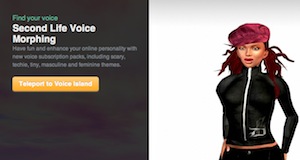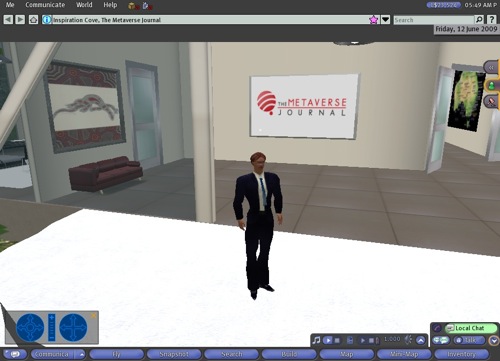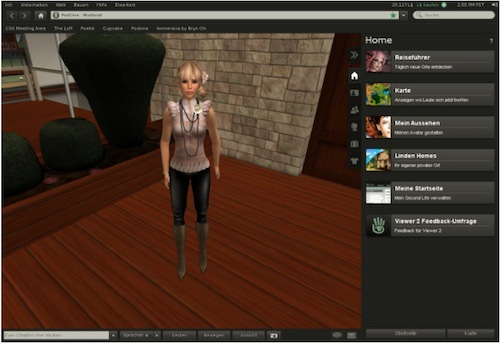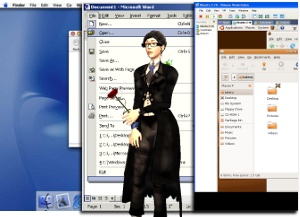First – some cynicism on what is otherwise a noteworthy announcement. It’s hard to imagine that it’s spontaneity that led to a fairly significant viewer upgrade a day after laying off 30% of its staff. It’s a move that will be seen through by a lot of Second Life residents for what it is: a carefully planned PR exercise to take the focus off the cutbacks whilst emphasising it’s ‘business as usual’.
On to the detail: aside from a bunch of bug fixes, the flagship for 2.1 beta, is the availability of voice morphing. For an extra fee of L$750 per month you can buy a pack of five voice morphs, with five different packs available. It’s a feature that will go down a treat with a lot of Second Life users and a lot will pay for the privilege – though the Lab obviously forecasted the revenue wouldn’t be enough to cover their wages and salaries bill as it existed a week ago.
You can download the alpha version now. Of course, I’m not sure how you have a 2.1 betaalpha before a 2.01 release version is on the horizon, but maybe that’s just me. I did try checking out Voice Island but was just given an error – either because it’s full or because I tried accessing it from an older Viewer version.




 If you’re a Mac user, you know you’ve got access to a whole slew of first-class applications. That is, apps that follow the user-interface style guidelines for the Mac. Painstakingly developed and tested over time, the guidelines ensure consistent layouts of menus, options and hotkeys, so that you don’t spend your time struggling to work out how to do the familiar, when you should be getting on with gaining expertise in the unfamiliar.
If you’re a Mac user, you know you’ve got access to a whole slew of first-class applications. That is, apps that follow the user-interface style guidelines for the Mac. Painstakingly developed and tested over time, the guidelines ensure consistent layouts of menus, options and hotkeys, so that you don’t spend your time struggling to work out how to do the familiar, when you should be getting on with gaining expertise in the unfamiliar.
Recent Comments